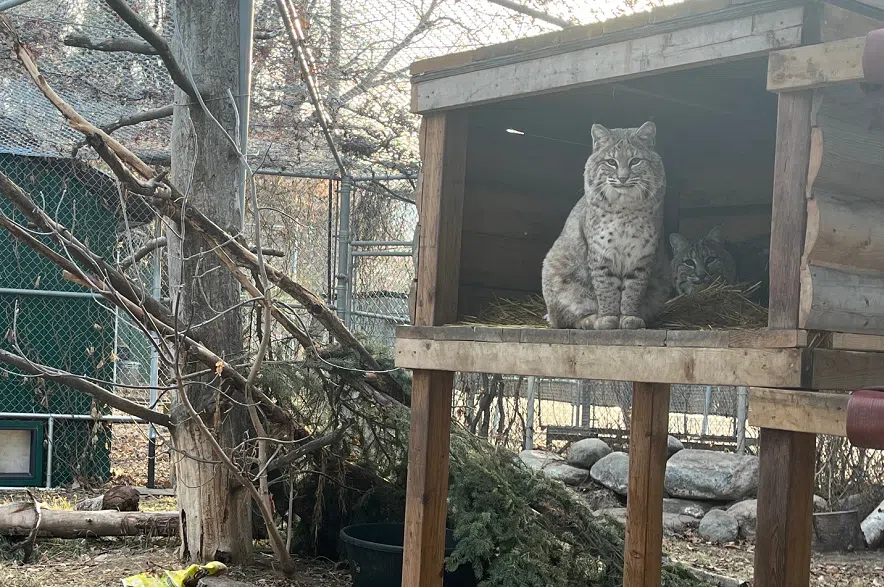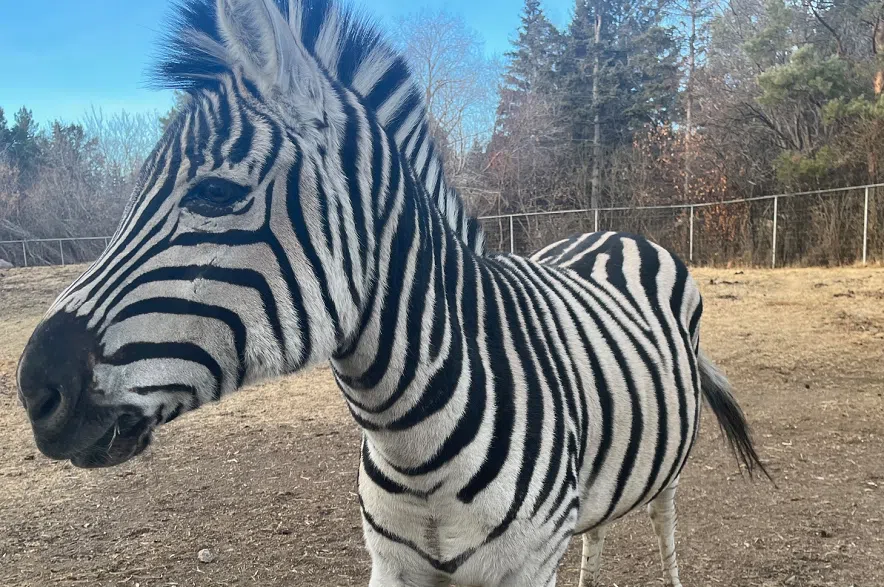Animals in Saskatchewan are embracing the warm winter brought on by El Niño.
Renny Grilz, resource management officer for the Meewasin Valley Authority, said some animals take full advantage of the warm weather, just like people do.
Deer and jackrabbits can be seen out in the valley, and birds like ducks and geese haven’t migrated yet, he said.
At the end of October a cold snap typically kick-starts migration, but in the last few years, Grilz explained, more and more birds are sticking around because food is still available around the river and in crops.

Dingos at Saskatoon’s zoo can spend some days and nights outdoors this month thanks to the warm temperatures. (Mia Holowaychuk/650 CKOM)
Grilz added that the activity at the authority’s bird feeders is substantially slower because of this, adding that the birds aren’t currently in need of fatty material that can be found in sunflower seeds.
“My bird feeder at my house definitely isn’t as busy as it was last year at this time,” he said.
The Saskatoon Nature Society is currently conducting a Christmas bird count, Grilz said, and on Thursday some species were spotted in the Gardiner Dam area that normally wouldn’t be around in December, including the Baird’s sandpiper, Ross’s goose, and herring gull.
“It’s just the natural process with this El Niño winter,” he said. “Things just don’t move on like we normally expect.”
Grilz predicted that once snow starts to fall and temperatures start dropping into the -20 C range, birds will start to move further south.
At the Saskatoon Forestry Farm Park & Zoo, some animals like zebras, which can only handle temperatures down to around -9 C, are embracing the higher-than-average temperatures.
“They’re out at night, (and) they have the ability to go out and get some sun,” said zoo manager Jeff Mitchell.
Earlier this year, the province committed to providing $120,000 to help with the maintenance and care for the zebras, which includes a heated barn for the animals. The zebras arrived at the zoo after they were seized as part of a wildlife investigation.
The permitting process is currently underway, Mitchell said, and the barn is expected to be up within three weeks of getting the permits. He predicted that will happen in January.
The zoo’s Australian dingos are usually stuck inside at this time of year, but Mitchell said they can spend some days and nights outside this month due to the warm temperatures.
Mitchell said the weather also affects Kazi the snow leopard’s behaviour. The big cat usually sits high on its perch when weather drops to around -30 C, but this year, he said, it’s sitting quite low.
The zoo’s bears, Koda and Mistaya, have already fallen into their winter naps, known as torpor. For bears, the time when they enter torpor is dependent on daylight rather than temperature, Mitchell explained.
“Although, with the temperatures being warmer, we are expecting to see them up and about a little bit more often than usual,” Mitchell said.
The temperature doesn’t impact some animals at the zoo, like bison or elk which adapt well to the weather year round, he added.
Mitchell said the zoo broke an all-time attendance record this year, bringing in just under 160,000 people. With the warmer December, he said even more visitors and schools are coming out this month.












